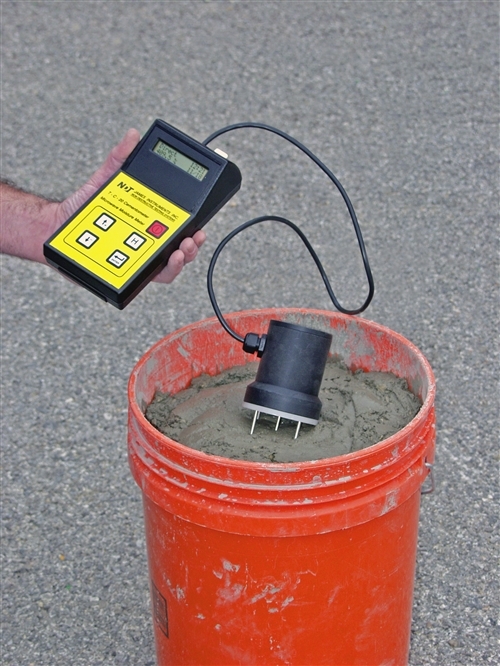Understanding the Value of a Moisture Meter in Stopping Mold and Water Damages in Your Home
In the realm of home upkeep, the visibility of wetness can usually be a silent yet formidable adversary, qualified of causing prevalent mold growth and insidious water damages if left unchecked. Understanding the importance of a dampness meter in this battle is not merely a choice yet a tactical requirement.
Relevance of Moisture Discovery
Reliable dampness detection methods are vital for safeguarding buildings and avoiding potential mold development and water damage. Wetness can leak into various building materials, causing structural problems and carcinogen. By making use of a dampness meter, residential or commercial property owners can proactively identify areas susceptible to excess dampness, enabling prompt intervention and mitigation approaches.
Moisture meters offer exact analyses of wetness degrees in different materials such as drywall, wood, and concrete. This data aids in pinpointing areas of problem, also in hard-to-reach or hidden areas. Early discovery of wetness build-up enables timely repairs or adjustments to stop more damages.

How Moisture Meters Job
Wetness meters play an essential function in the aggressive identification of excess moisture, assisting in the prevention of prospective mold and mildew growth and water damages by offering accurate readings of wetness levels in various structure materials. These devices work based upon different concepts, depending on their type. Moisture Meter. Pin-type moisture meters, as an example, have 2 pins that pass through the product to measure the electrical resistance in between them. When wetness exists, it boosts the material's conductivity, causing a lower resistance reading. Pinless wetness meters, on the other hand, usage electro-magnetic sensing units to scan the material without creating damages. These sensors release electromagnetic signals that penetrate the product and measure the dielectric buildings, indicating moisture web content. Some advanced wetness meters pin both incorporate and pinless innovations for comprehensive wetness discovery. Understanding how moisture meters function is essential for accurate and prompt wetness degree evaluations, allowing effective safety nets versus mold and mildew and water damages.
Detecting Early Warning Indicators
Upon first assessment of a home, identifying refined indications of excess moisture comes to be important in the very early discovery of potential mold development and water damage. Some common early indication consist of stuffy smells, water spots on wall surfaces or ceilings, peeling off paint or wallpaper, and distorted or discolored surface areas. Mildewy odors frequently show the visibility of mold and mildew or mildew, even if no visible indicators are noticeable. Water stains can indicate leakages or infiltration, while peeling off paint or wallpaper might be a result of dampness jeopardizing the attachment of these products to the surface. Distorted or blemished surfaces, such as distorting floorboards or blemished drywall, are clear indications of water damages. In addition, a boost in allergic reaction symptoms or respiratory system problems amongst passengers may suggest the visibility of mold as a result of excess moisture. By without delay recognizing and attending to these very early caution indications, house owners can alleviate the danger of comprehensive mold growth and water damage in their buildings.
Protecting Against Mold Development
Acknowledging very early warning signs of excess dampness within a residential or commercial property not just enables prompt detection of possible mold and mildew growth and water damage yet also serves as a positive action in protecting against the spreading of mold. To efficiently stop mold and mildew development, it is crucial to deal with any type of resources of dampness promptly.
Keeping track of moisture degrees in locations prone to wetness, such as cellars and creep areas, using a dampness meter can additionally help in early detection of useful site raised wetness levels and possible mold and mildew growth - Moisture Meter. By taking proactive measures to protect against excess dampness and mold growth, home owners can secure their building and indoor air quality.
Advantages of Regular Surveillance
Routine tracking of moisture degrees in a property can play an important function in keeping a healthy interior environment and preventing Homepage possible mold and water damages. By frequently examining moisture degrees, property owners can identify any type of concerns quickly and take necessary actions to protect against mold development and water damages. Among the vital benefits of routine surveillance is early discovery. By identifying and attending to high dampness levels early, homeowners can step in prior to mold and mildew has the chance to spread and establish. This positive strategy can conserve both money and time in the future by protecting against comprehensive mold removal and fixing costs.
In addition, normal tracking permits homeowners to track patterns and trends in dampness levels gradually. By establishing a baseline and monitoring adjustments, individuals can determine any areas of problem or possible susceptabilities in the home's structure. This data-driven method enables targeted treatments and maintenance efforts to address underlying concerns prior to they escalate into more substantial issues. Eventually, the consistent monitoring of moisture degrees equips property owners to shield their property, safeguard their wellness, and protect the honesty of their interior environment.

Final Thought

By making use of a moisture meter, property proprietors can proactively recognize areas prone to excess moisture, permitting my website for timely intervention and mitigation strategies.

Keeping an eye on dampness levels in locations susceptible to moisture, such as cellars and crawl spaces, using a wetness meter can also help in early detection of elevated dampness degrees and possible mold development. (Moisture Meter)